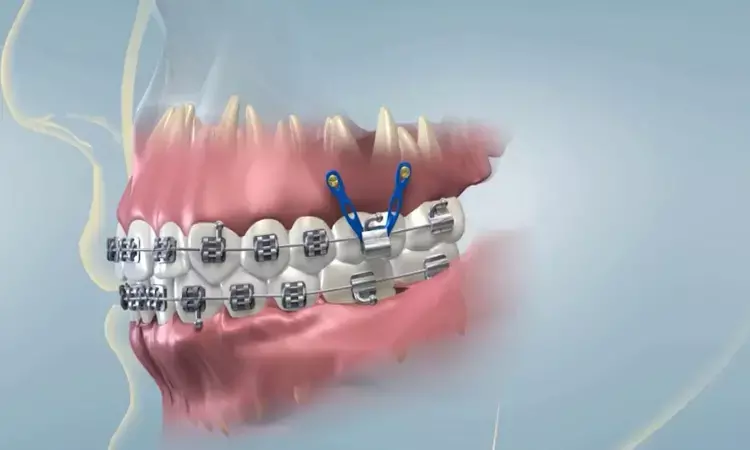- Home
- Medical news & Guidelines
- Anesthesiology
- Cardiology and CTVS
- Critical Care
- Dentistry
- Dermatology
- Diabetes and Endocrinology
- ENT
- Gastroenterology
- Medicine
- Nephrology
- Neurology
- Obstretics-Gynaecology
- Oncology
- Ophthalmology
- Orthopaedics
- Pediatrics-Neonatology
- Psychiatry
- Pulmonology
- Radiology
- Surgery
- Urology
- Laboratory Medicine
- Diet
- Nursing
- Paramedical
- Physiotherapy
- Health news
- Fact Check
- Bone Health Fact Check
- Brain Health Fact Check
- Cancer Related Fact Check
- Child Care Fact Check
- Dental and oral health fact check
- Diabetes and metabolic health fact check
- Diet and Nutrition Fact Check
- Eye and ENT Care Fact Check
- Fitness fact check
- Gut health fact check
- Heart health fact check
- Kidney health fact check
- Medical education fact check
- Men's health fact check
- Respiratory fact check
- Skin and hair care fact check
- Vaccine and Immunization fact check
- Women's health fact check
- AYUSH
- State News
- Andaman and Nicobar Islands
- Andhra Pradesh
- Arunachal Pradesh
- Assam
- Bihar
- Chandigarh
- Chattisgarh
- Dadra and Nagar Haveli
- Daman and Diu
- Delhi
- Goa
- Gujarat
- Haryana
- Himachal Pradesh
- Jammu & Kashmir
- Jharkhand
- Karnataka
- Kerala
- Ladakh
- Lakshadweep
- Madhya Pradesh
- Maharashtra
- Manipur
- Meghalaya
- Mizoram
- Nagaland
- Odisha
- Puducherry
- Punjab
- Rajasthan
- Sikkim
- Tamil Nadu
- Telangana
- Tripura
- Uttar Pradesh
- Uttrakhand
- West Bengal
- Medical Education
- Industry
Spontaneous repair of iatrogenic root perforation by an orthodontic miniscrew- A case report

Pi-En Chang and colleagues have recently published an interesting report of a spontaneous iatrogenic root perforation repair with the help of an orthodontic miniscrew.
The study is published in the Journal of American Dental Association.
Orthodontic miniscrews have become popular tools for providing temporary anchorage during orthodontic treatment. Although they are easy to insert, damage to the periodontal ligament or dental root during insertion is an unfavorable iatrogenic complication. The risks associated with miniscrew placement should be clearly understood by both the clinician and the patient. Complications can arise during miniscrew placement and after orthodontic loading that affects stability and patient safety. A thorough understanding of proper placement technique, bone density and landscape, peri-implant soft-tissue, regional anatomic structures, and patient home care is imperative for optimal patient safety and miniscrew success. Root perforation during miniscrew insertion in human teeth has been reported in a few articles.
Hence, the authors describe the spontaneous repair of an iatrogenic root perforation in the mandibular first molar that occurred during insertion of an orthodontic miniscrew in a young girl undergoing orthodontic treatment.
The authors studied the report of a 15-year-old girl with malocclusion who was undergoing orthodontic treatment when the mesial root of her mandibular right first molar was damaged by an orthodontic miniscrew.
The miniscrew and the corresponding bracket were immediately removed to avoid any unnecessary forces on the tooth. Because the pulp remained vital without any additional damage and infection for 6 months, orthodontic treatment was resumed and completed in 9 months without any pulp damage or unfavorable symptoms. Serial periapical radiographs and cone-beam computed tomographic images showed that the injured area was surrounded by reparative tissue without any apical lesion.
Therefore, the researchers further concluded that "immediate removal of unnecessary forces provides an environment for spontaneous repair in cases of iatrogenic root perforation by orthodontic miniscrews, even when the damage involves the pulp."
If force stimulation is avoided for a certain period, which was 6 months in this case, it may be possible to complete the orthodontic treatment without unfavorable symptoms, they added.
Dr. Nandita Mohan is a practicing pediatric dentist with more than 5 years of clinical work experience. Along with this, she is equally interested in keeping herself up to date about the latest developments in the field of medicine and dentistry which is the driving force for her to be in association with Medical Dialogues. She also has her name attached with many publications; both national and international. She has pursued her BDS from Rajiv Gandhi University of Health Sciences, Bangalore and later went to enter her dream specialty (MDS) in the Department of Pedodontics and Preventive Dentistry from Pt. B.D. Sharma University of Health Sciences. Through all the years of experience, her core interest in learning something new has never stopped. She can be contacted at editorial@medicaldialogues.in. Contact no. 011-43720751
Dr Kamal Kant Kohli-MBBS, DTCD- a chest specialist with more than 30 years of practice and a flair for writing clinical articles, Dr Kamal Kant Kohli joined Medical Dialogues as a Chief Editor of Medical News. Besides writing articles, as an editor, he proofreads and verifies all the medical content published on Medical Dialogues including those coming from journals, studies,medical conferences,guidelines etc. Email: drkohli@medicaldialogues.in. Contact no. 011-43720751


